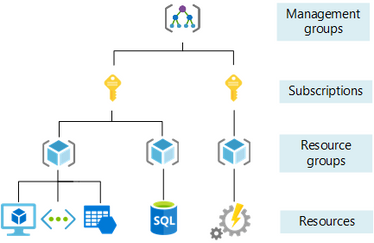Organize and report on your heterogeneous compute with Azure Arc-enabled Infrastructure

In today’s complex and dynamic IT landscape, managing your compute across hybrid, multicloud, and edge workloads is a critical challenge. You need to have a clear and comprehensive view of your IT assets across all platforms and locations. Moreover, you need to know where they are located, how they are configured, and ensure that your resources are compliant with your policies and standards.
Azure Arc affords customers the ability to extend Azure services spanning security, monitoring, and governance, this is powered by extending the Azure management plane. Every Arc-enabled resource is associated with an ARM representation. What you might not know is that extending Azure management empowers customers to:
- Organize resources into logical groups using resource groups and subscriptions.
- Aggregate metadata on your resources and tag to reflect their workloads or ownership.
- Report on the performance, health, and security of your resources consistently.
Organize with Azure Arc. One of the key benefits of Azure management is the ability to use resource groups and subscriptions to organize your resources by function, location, environment, or any other criteria that makes sense for your business. For example, you can create resource groups for each department or application. You can also create subscriptions for different cost centers or regions. By using resource groups and subscriptions, you can easily manage the lifecycle, access control, billing, and reporting of your resources.
Query with Azure Resource Graph. Azure Arc-enabled infrastructure resources are represented in ARM, affording the ability to use Azure Resource Graph to query resource properties. This includes metadata ingested by default for your Azure Arc-enabled infrastructure like multicloud properties on AWS or GCP or details on distro or OS version. Moreover, Arc-enabled infrastructure resources can be tagged to augment the captured metadata reflecting ownership. ARG queries can be readily exported and integrated into reporting and is highly performant, giving you the view, you need across thousands of assets in just seconds.
Visualize with Azure Monitor. Azure Arc-enabled infrastructure integrates into Azure observability with the ability to extend VM Insights to Arc-enabled servers, Container Insights to Arc-enabled Kubernetes, and Best Practices Assessment to Arc-enabled SQL server. The data collected can be analyzed used Log Analytics or visualized using Azure Dashboards and Workbooks. These logs can also integrate into existing reporting solutions like Power BI, with integrations into Grafana.
Ultimately, Azure management provides a comprehensive solution for visibility of your heterogeneous compute across hybrid, multicloud, and edge environments. You can organize, query, and monitor, all your resources from a single pane of glass with Azure Arc-enabled infrastructure.
Published on:
Learn moreRelated posts
Fabric Mirroring for Azure Cosmos DB: Public Preview Refresh Now Live with New Features
We’re thrilled to announce the latest refresh of Fabric Mirroring for Azure Cosmos DB, now available with several powerful new features that e...
Power Platform – Use Azure Key Vault secrets with environment variables
We are announcing the ability to use Azure Key Vault secrets with environment variables in Power Platform. This feature will reach general ava...
Validating Azure Key Vault Access Securely in Fabric Notebooks
Working with sensitive data in Microsoft Fabric requires careful handling of secrets, especially when collaborating externally. In a recent cu...
Azure Developer CLI (azd) – May 2025
This post announces the May release of the Azure Developer CLI (`azd`). The post Azure Developer CLI (azd) – May 2025 appeared first on ...
Azure Cosmos DB with DiskANN Part 4: Stable Vector Search Recall with Streaming Data
Vector Search with Azure Cosmos DB In Part 1 and Part 2 of this series, we explored vector search with Azure Cosmos DB and best practices for...
General Availability for Data API in vCore-based Azure Cosmos DB for MongoDB
Title: General Availability for Data API in vCore-based Azure Cosmos DB for MongoDB We’re excited to announce the general availability of the ...
Efficiently and Elegantly Modeling Embeddings in Azure SQL and SQL Server
Storing and querying text embeddings in a database it might seem challenging, but with the right schema design, it’s not only possible, ...


